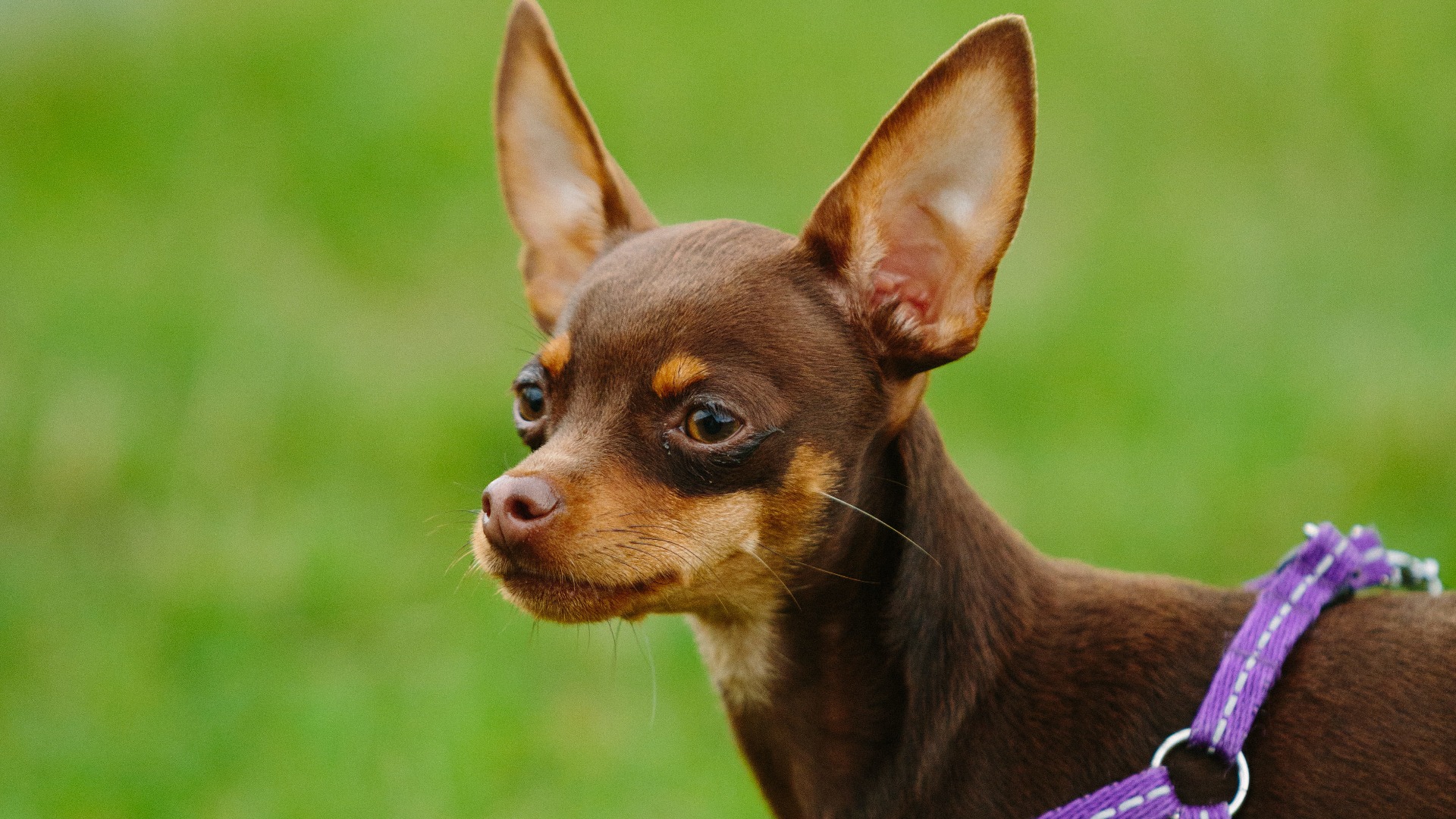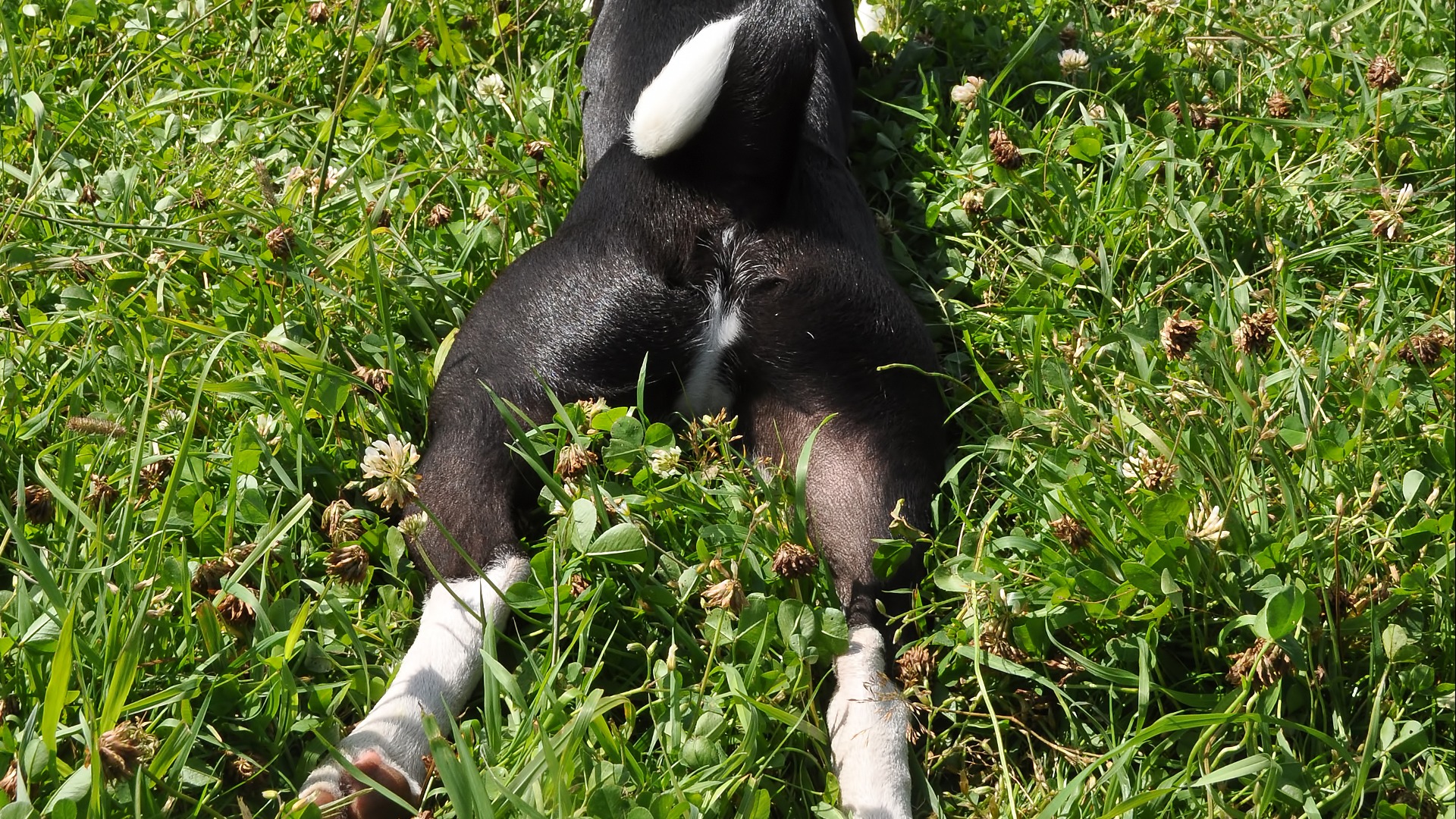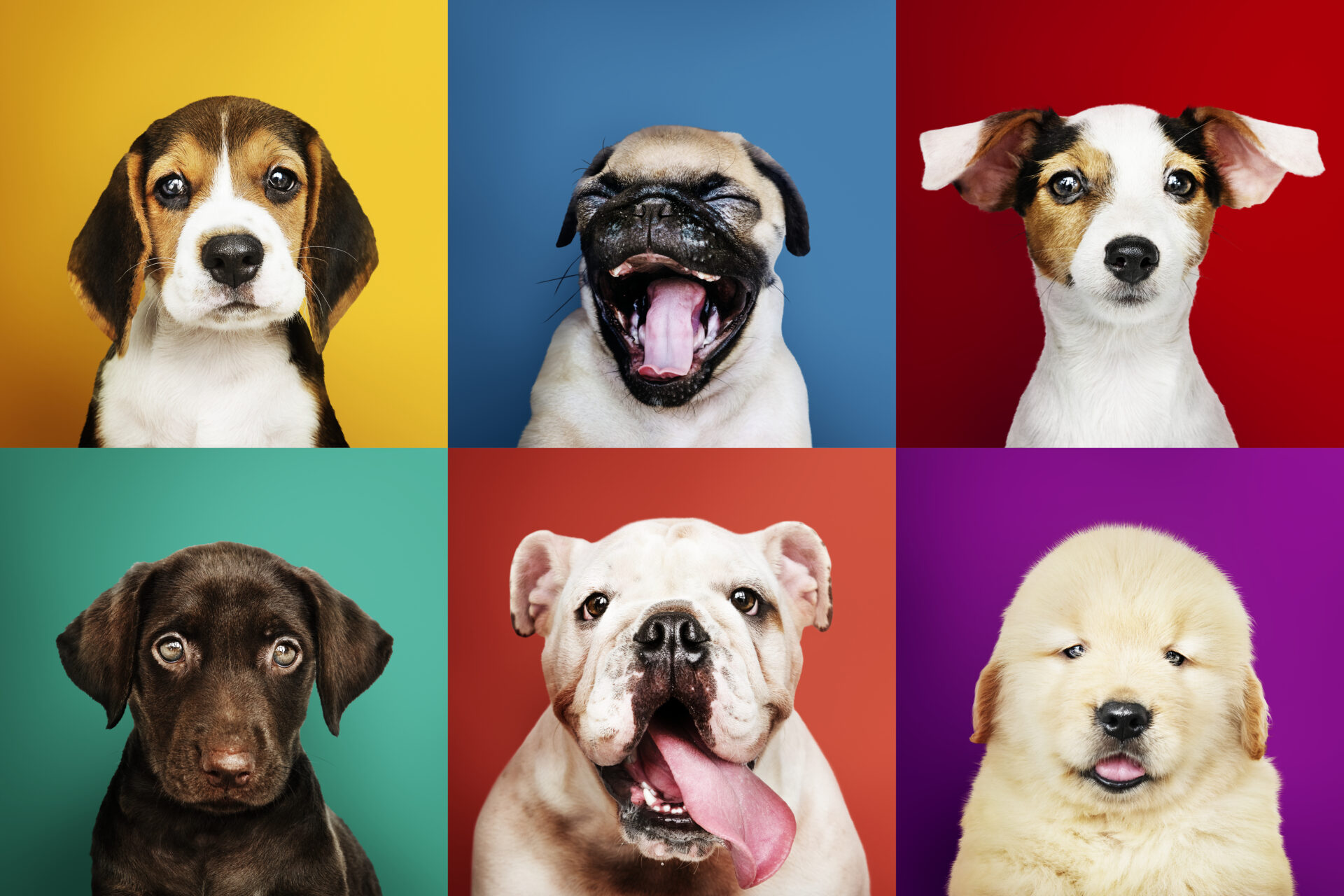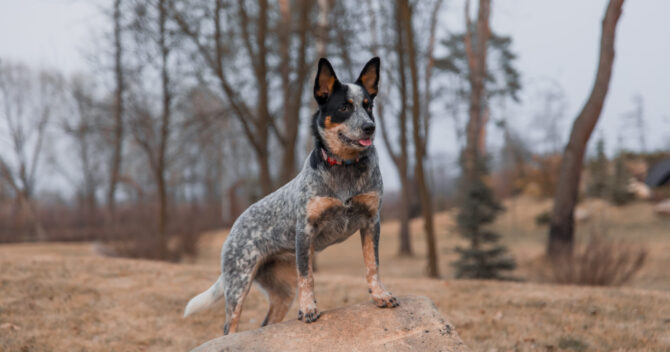Prague ratler - appearance
The Prague ratler has a small, muscular figure. It measures 20 to 23 centimeters and weighs approximately 2,6 kilograms. He has a short, thin and shiny coat, most often black (black and tan), brown with tan markings, blue and tan, gray, and also in a shade of yellow or red. The variety with moderately long fur has fringes on the ears, rump and tail. The head of the Prague Ratler is elongated, and the muzzle does not exceed half the length of the head. The stop is pronounced, the chest is halfway up at the withers. The almond-shaped eyes are set wide apart and match the color of the coat. The ears, set far back, are pointed, triangular, natural erect, in some cases slightly folded. The fore and hind legs are well muscled. The Prague ratler has a medium-length, strong tail, tapering towards the end, usually carried straight or slightly arched over the back.
History of the breed
The Prague ratler was bred by the Czech nobility as early as the Middle Ages. Later it was mainly used to catch or scare rats and mice. Thanks to his small stature, acute sense of smell, perseverance and innate agility, he reached every hideout. Successes in fighting rodents earned him supporters even at the Czech royal court. He quickly won the hearts of aristocrats and became a popular companion dog. In the second half of the nineteenth century, the breed fell into oblivion, and by the beginning of the next century, only a few breeding farms existed. Fortunately, the breed was successfully recreated in the 80s and is now doing quite well. According to the classification of the International Cynological Federation, the Prague Ratler belongs to Group IX, Section 9, ornamental and companion dogs.
Suggested sizes and widths of accessories for this breed of dog:
Here are the suggested sizes for adult dogs of this breed. They were selected on the basis of many years of experience in sewing accessories and the most common choices of other dog owners of this breed. Remember, only measuring will give you 100% certainty - every dog is different.
Prague ratler - disposition
The Prague ratler is very social and creates an extremely strong bond with its handler. Patient, friendly and consistent upbringing (lovingly and calmly) makes him a loyal, obedient companion. It will adapt easily to the lifestyle of its owner, as long as it is provided with enough fun and mental challenges. At the beginning he is reserved and careful towards strangers, but he makes friends quickly and after a while he is interested in stroking.
The Prague ratler feels good around children, especially those who are aware of its delicate stature. He gets along equally well with dogs and cats, although smaller animals (guinea pigs, hamsters) may be considered as victims. This playful four-legged friend is an intelligent, knowledgeable student. She loves regular walks and a varied lifestyle. She enjoys joint trips, visits to restaurants, and travels. He is great at dog sports. Agility, dog dance or coursing bring him a lot of joy. Certainly, the Prague ratler is a great companion for lovers of an active lifestyle.
Health
Prague ratlers are considered to be healthy and hardy quadrupeds. Genetic diseases rarely affect this breed. However, special attention should be paid to conditions that are typical of very small breeds. These include elbow dysplasia, which in this case is mainly postural. Frequent jumping from high surfaces strains the elbows and promotes dysplasia in old age. Climbing stairs is also tedious and such situations should be kept to a minimum. Since the Prague ratler has a very delicate silhouette, it has a tendency to break the bones and dislocate the kneecap. This dysfunction can cause painful knee problems, generally resulting in paralysis. For this reason, you should always supervise your pet playing with young children and be careful when playing with strong, lively dogs. Additionally, some puppies have problems with milk teeth that do not erupt and need to be surgically removed.
The average life expectancy of representatives of this breed is from 12 to 14 years.
Important! It should be remembered that the Prague ratler absolutely hates the cold and should wear clothes at low temperatures.
Prague ratler and care
The smooth hair of the Prague Ratler is very easy to care for. Regular brushing 2-3 times a week is enough. When your pet changes its cover, it is worth increasing the frequency of brushing. To minimize shedding in your home during this time, it's best to brush your hair every day. Dirt on the fur after a walk can simply be wiped off with a damp cloth. As a Prague ratler is prone to dental problems, daily dental care becomes essential. You should also wash the skin around the eyes regularly, clean the ears, check the claws and trim them if necessary.
Nutrition
Due to its small size, the ratler requires very little food, so the key principle here is food quality instead of quantity. Caring for the health, length and comfort of your pet's life, you should balance the ratio of dry and wet food, follow a diet with a high content of meat (varied with fruit and vegetables), avoid frequent feed changes and regularly give appropriate supplements and vitamin preparations.
Interesting and worth knowing
- The Prague Ratler breed is the national breed of dogs in the Czech Republic. Unfortunately, in the home country it is still allowed to cut the tail of these cute quadrupeds.
- It is estimated that there are only about 6000 purebred Prague ratlers in the world.
- The Prague ratler is extremely alert, each disturbing murmur he signals with a sonorous barking.
Maybe you'll like it:



